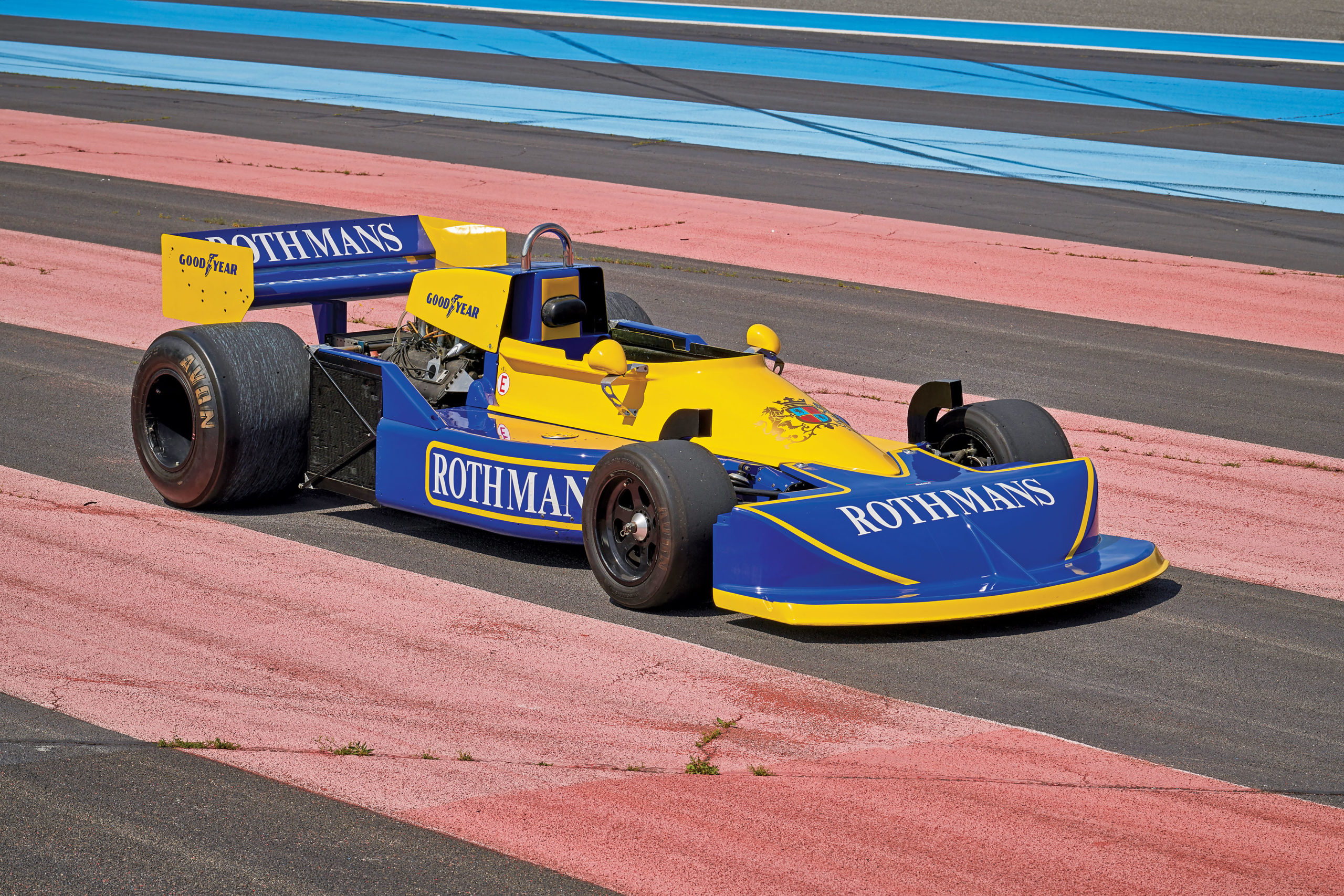No chassis number available
For the 1977 Formula One season, March developed the 771 that would proudly sport new Rothmans livery. The 771 had slight upgrades compared to the outgoing 761 with a front-mounted radiator, a wider tub, longer wheelbase, and lighter weight than previous models. It was powered by a 3-liter Cosworth DFV V8 DOHC engine mated to a 5-speed Hewland FG400 gearbox.
Chassis number 771-01 was first used as a practice car by Ian Scheckter at the 1977 Belgian Grand Prix held at Zolder. On October 2, 1977, its sister car, 77102, crashed at the United States Grand Prix held at Watkins Glen. Parts from 77101 and 77102 were combined to form one car, numbered “771½”. This car raced at the Canadian Grand Prix held at Mosport on October 9, 1977. With Ian Scheckter behind the wheel, the car qualified 18th and retired after 29 laps due to engine issues.
Chassis number 77101 has an FIA Historical Technical Passport valid in racing for the period of 1977 to 1985. In 2001, all the relevant components made from magnesium and aluminum were inspected for corrosion and cracking. The car had over €7,500 spent on parts and labor in 2014 and 2015, receiving new driveshafts, yokes and CV joints, as well as work carried out on the Hewland FG400 gearbox.
Presented in its stunning Rothmans livery and retaining a Cosworth DFV engine and Hewland FG400 gearbox, this retired Formula One car is as striking and bold as it was in 1977.

